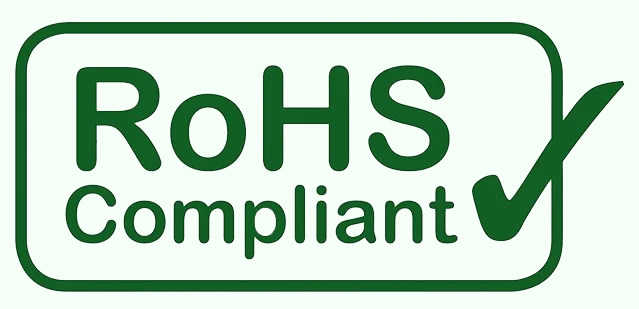The potential of 5G connection are endless
-
January 3, 2025
-
54
At first, there was some opposition and skepticism from the public toward attempts to deploy the 5G network. But as time has gone on, an increasing number of individuals have begun to utilize this new technology. It facilitates quick mobile data transfers and connections between a vast array of different devices, such as environmental sensors or units that identify particular items or occurrences. Forecasting, monitoring, remote control, and other tasks that were previously unfeasible or unattainable because of wireless networks’ technological constraints are thus made easier.
Installing software upgrades in base stations was the first step in implementing 5G transmission technology, which was based on the 4G LTE technology that was already in use. However, this approach mostly affected marketing and promotion for the new network, making it difficult to fully utilize 5G. However, it must also be acknowledged that there were certain benefits compared to LTE. First, without expanding the physical infrastructure, the network capacity was improved, and second, the transmission speed was raised. Rather, higher carrier frequencies (the “C” band) are employed to enable transmission speeds of several gigabits per second now that the “old” infrastructure has been in place for a while.
Within a 1 km2 region, the 5G network can run up to 1 million devices. The development of IoT, Smart Cities, modern agriculture, Industry 4.0, and other applications—like water supply and lighting management systems, software for analyzing traffic intensity, parking lot management programs, and autonomous vehicle operation supervision—are greatly impacted by this capability. Furthermore, because of the remarkable network capacity, devices may interact with each other in addition to sending data to the system that monitors their operations or makes predictions. Data on accidents, traffic bottlenecks, and diversions may still be shared thanks to solutions installed in certain autonomous cars today. Additionally, there are systems that can eliminate congestion by controlling traffic signals based on real traffic.
5G technology: an introduction
The primary radio frequency band used by 5G networks is between 3.3 and 4.9 GHz. Devices intended to penetrate rooms and cover a wider area are assigned lower frequency bands (<1 GHz). Applications that provide both indoor and outdoor connection and local hotspots employ millimeter waves, which have a frequency range of 24 to 28 GHz and 39 GHz. Because it allows waves from different frequency ranges to be combined, the 5G network radio frequency interface has been designed to provide the greatest amount of flexibility.
The deployment of antenna arrays and MIMO technology are two more significant aspects of the new interface. In order to guarantee coverage of the area and steer radio frequency beams away from the user’s head (in mobile devices), base stations are equipped with antennas, also known as Massive MIMO, which help form both the frequency and radiation characteristics correctly. Therefore, during the early phases of deployment, the MIMO antennas allowed the LTE and 5G technologies to “coexist” in the same space.
The ORAN (Open Radio Access Network) interface, which connects the RF route to cloud edge devices, is a component of the 5G radio network. It offers access to cloud resources and services and enables flexible service deployment. Cloud edge devices carry out the processing tasks necessary for proper radio frequency route operation, guaranteeing that the network capacity is promptly adjusted to real needs.
Since the new 5G network applications cover an even wider spectrum, the variety of modulation methods will probably grow as well. For instance, since the fixed connection used to send data from the main network to sub-networks already employs a higher modulation scheme than 256QAM, the 1024QAM modulation scheme may be included in the radio frequency interface specification. Depending on the terminal equipment, modulation schemes may also be included in the radio frequency interface requirements.
The scalable OFDM technology is necessary to operate a variety of services across a wide frequency range. It entails frequency-domain multiplexing, or the simultaneous transmission of many data streams using orthogonal carrier frequencies. For high-carrier-frequency, small-area services where latency is a critical consideration, wider carrier spacing could be possible. Lower individual carrier frequencies allow for less space between them, which is especially helpful for multimedia services like eMBMS, large-area services, and narrow-band equipment. By multiplexing two distinct channel splits, it would also be feasible to use the same carriers to serve numerous services with varying requirements at the same time.
5G – key assumptions
The following important service sectors are intended to be operated by the 5G network architecture:
Connectivity via enhanced mobile broadband (eMBB) The services now utilized in mobile data transfer applications are expanded and improved by this service area. It guarantees 10 Gb/s transmission speeds for high-throughput uses like VR/AR gaming and video streaming.
Communications of the Massive Machine Type (mMTC) The purpose of this service is to link a large number of devices. Applications pertaining to Smart City solutions and other Internet of Things applications are anticipated to be its primary uses.
For essential applications that demand network dependability, low latency (less than 1 ms), and quick reaction times, Ultra Reliable Low Latency Communications (URLLC) is the ideal option. Autonomous cars and remote control systems for industrial machines are examples of such uses.
eMBB, or mobile broadband network
When 5G was first being implemented, the primary focus was on increasing data transmission speeds in order to improve the capabilities of mobile broadband applications.
Because 5G technology uses broadband transmissions that are backed by MIMO technology, it is feasible to achieve extremely high transmission speeds. For carrier frequencies below 1 GHz, the usual maximum bandwidth is 20 MHz, which corresponds to 200 Mb/s TDD (Time Division Duplex) speeds at 2×2 MIMO. Transmission rates of up to 2 gigabit per second are possible using the 100 MHz TDD band and 4×4 MIMO applications. Additionally, millimeter waves in the 24–28 GHz frequency range provide 10–20 Gb/s at the 1 GHz bandwidth with 2×2 and 4×4 MIMO.
Higher data transmission rates and significantly greater network capacity were made possible by the introduction of 5G technology into pre-existing LTE networks. This was mostly due to the use of antenna matrices and MIMO technology. At medium traffic intensity, an LTE cell with a 20 MHz bandwidth guarantees throughput of 40 Mb/s in real-world networks. A 5G network cell with a bandwidth of 100 MHz may connect 20 times as many people since it uses a frequency range that is five times wider. Thus far, 5G technology has guaranteed the largest capacity expansion in mobile phone network history.
Millions of linked devices (mMTC)
5G service areas include massive machine-type communications (mMTC), one of the three main sectors. It makes it easier to send and receive enormous volumes of tiny data packets, such sensor data, between several devices. mMTC simplifies the use of apps that gather data from IoT sensors to improve the quality of users’ lives or the services they offer.
Compared to LTE technology, mMTC offers a device density of up to 1 million devices per 1 km2, which is more than ten times higher. As a result, 5G offers the infrastructure required to run massive sensor systems linked via a network of mobile phone base stations.
The mMTC service area is made to accommodate large-scale Internet of Things deployments that manage a large number of low-power devices for frequent small-data transfers. A extended battery-powered life—up to ten years—is one of the primary needs for such gadgets.
Typically, IoT sensors provide tiny data packets up to 10 kilometers in length. This makes them perfect for uses like agriculture, where hundreds of sensors can provide information on the weather, the moisture content of the soil, and the state of equipment spread across large farmed areas. For instance, the frequency and regions of irrigation may be optimized with the use of such data. Millimeter waves, which have a relatively low range and are significantly reduced by external obstructions, cannot be used by sensors in these kinds of applications. In order to do this, the 5G network’s essential feature is required, which allows each of the three service zones to function as a separate network inside the same physical infrastructure.
URLLC = improved communication dependability
Applications needing very low latency periods (less than 1 ms) and great network stability are the target audience for the URLLC service. Drone or vehicle operation are two examples of such uses. There are several advantages to this, including increased road safety and time savings. Vehicles must remain be connected to the infrastructure, including traffic signals, emergency services, and road maintenance, as well as to each other. Since only very dependable and secure connections can guarantee the necessary degree of safety in such a situation, data would need to be sent in real time with the fewest possible delays.
Short latency times and flawless dependability are characteristics of URLLC. The condition that no more than 0.001% of 20-byte packages be delivered with a delay greater than 1 ms defines this. By utilizing technologies like beamforming, network slicing, and package retransmission protocols, the 5G network architecture aims to eradicate delivery problems and failures.
In the 4G LTE system, a user’s device and base station exchange a series of signaling requests (handshakes) prior to transferring any type of data. The base station must allow access before the data is transferred, which causes the latency time to increase by up to 11 ms. By utilizing technologies like beamforming, network slicing, and package retransmission protocols, the 5G network architecture aims to eradicate delivery problems and failures.
In the 4G LTE system, a user’s device and base station exchange a series of signaling requests (handshakes) prior to transferring any type of data. The base station must allow access before the data is transferred, which causes the latency time to increase by up to 11 ms. Base stations can reserve throughput to transmit the connection in this way since the URLLC 5G system has unrestricted access to the up-link connection. The route’s latency is greatly decreased since the user’s device does not have to wait for scheduling and access requests.
5G networks’ future
Due to the increasing network complexity brought about by the rollout of 5G networks, new technologies may now be introduced to meet a wide range of needs in both homes and businesses. This, in turn, leads to the telecom sector’s diversification and the plethora of opportunities brought about by the constantly expanding worldwide 5G accessibility. Specifically, URLLC will provide connection for vital applications, a concept that has been discussed for years but just lately put into practice.
The development of high-performance gadgets will provide even more difficulties for software developers and designers of electronic equipment. To guarantee the highest level of security and dependability for some applications, software developers might need to use new protocols, coding styles, and sharing strategies. To guarantee that the current equipment satisfies the 5G frequency band criteria or the ever-changing demands for battery operation speed and longevity, updates will also be necessary.






Leave a comment
You must be logged in to post a comment.